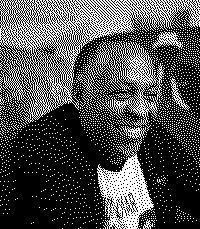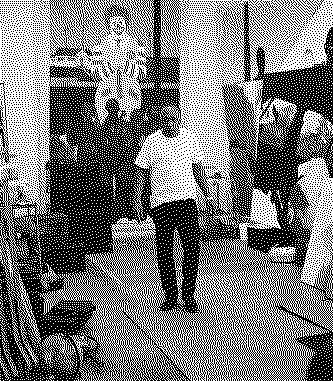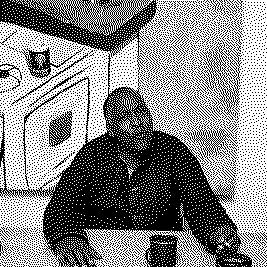Artists/Henry Taylor
Fast Facts
Focus on Black Life and Identity
Alberto Burri was renowned for his radical use of unconventional materials in art, such as burlap, tar, plastic, and even industrial waste. This innovative approach broke with traditional painting and sculpting methods, emphasizing the material itself as a vital element of artistic expression. Burri's work with these materials was pioneering, influencing the direction of post-war art towards embracing the aesthetic and conceptual possibilities of non-traditional mediums.
Social and Racial Injustice
Taylor frequently addresses themes of systemic racism and social injustice in his art. Notable works like "THE TIMES THAY AINT A CHANGING, FAST ENOUGH!" (2017) respond to incidents of police violence and highlight the ongoing struggles against racial discrimination (Artsy) (Elephant Art).
Use of Found Materials and Assemblage
Taylor incorporates unconventional materials such as recycled cigarette packs, cardboard, and everyday objects into his paintings and sculptures. This approach adds layers of meaning and connects his subjects to their environments and daily realities (Whitney Museum of American Art) (Wikipedia).
Portraiture and Human Connection
Taylor's portraits capture a wide range of subjects, from friends and family to celebrities and strangers. His empathetic and direct style emphasizes the personal connection and emotional depth of his subjects, portraying them with respect and authenticity (Whitney Museum of American Art) (Rubell Museum).
Critical Engagement with Historical and Contemporary Issues
Taylor’s works often blend historical references with contemporary events, creating a dialogue between past and present. His paintings compel viewers to reflect on the recurring nature of social and racial issues in America (Artsy) (Elephant Art).
Biography



Henry Taylor, born in 1958 in Ventura, California, is a contemporary American artist known for his vivid and empathetic portrayals of individuals from various walks of life. His work often addresses themes of race, class, and the human condition, with a particular focus on the African American experience.
Taylor’s initial exposure to art came from his father, who was a commercial painter at a naval air station, and from observing the artwork in the houses where his mother worked as a maid. He pursued his interest in art while studying journalism, anthropology, and set design at Oxnard College, where he was encouraged by James Jarvaise, the head of the Department of Fine and Performing Arts (The Fabric Workshop and Museum) (Studio Museum in Harlem).
In the 1990s, Taylor attended the California Institute of the Arts, where he earned a BFA and studied under influential artists like Charles Gaines. During this time, he also worked as a psychiatric technician at Camarillo State Mental Hospital, an experience that deeply influenced his artistic practice. Many of his early subjects were patients from the hospital, which helped instill a profound sense of empathy and humanity in his work (Studio Museum in Harlem) (Anthony Gallery).
Taylor’s paintings are characterized by their emotional intensity and gestural looseness, often incorporating a mix of materials such as canvas, wood, and everyday objects like cigarette packs and cereal boxes. His subjects range from family members and friends to celebrities and political figures, reflecting a broad spectrum of social and cultural narratives (Wikipedia) (Ocula).
Throughout his career, Taylor has received significant recognition and accolades. He was awarded the Robert De Niro Sr. Prize in 2018 and has exhibited his work in prominent venues such as MoMA PS1, the Whitney Museum of American Art, and the Venice Biennale. Some of his notable works include "Homage to a Brother" (2007), dedicated to Sean Bell, and "THE TIMES THAY AINT A CHANGING, FAST ENOUGH!" (2017), a poignant tribute to Philando Castile (Artnet) (Ocula).
Taylor continues to live and work in Los Angeles, creating art that challenges and expands the conventional boundaries of portraiture and social commentary (Wikipedia) (Anthony Gallery).
Importance
Henry Taylor is an influential contemporary artist whose work has garnered significant recognition and acclaim.
Representation of the African American Experience
Empathy and Humanity in Art
His experience working as a psychiatric technician greatly influenced his empathetic approach to portraying his subjects. This humanistic quality is evident in his detailed and respectful depictions of individuals from various walks of life (Studio Museum in Harlem) (Whitney Museum of American Art).
Innovative Use of Materials
Taylor's use of unconventional materials, such as cigarette packs, cereal boxes, and everyday objects, showcases his innovative approach to art. This creativity has expanded the boundaries of traditional portraiture and painting (Artsy) (Whitney Museum of American Art).
Critical Social Commentary
His paintings often address social issues, such as police violence and systemic racism, bringing these critical topics to the forefront of the art world. Works like "The Times Thay Ain’t A Changing, Fast Enough!" highlight the urgency and relevance of his social critique (Whitney Museum of American Art) (ArtReview).
Exhibitions and Recognition
Taylor has been featured in major exhibitions at prestigious institutions such as MoMA PS1, the Whitney Museum of American Art, and the Venice Biennale. His work's inclusion in these high-profile venues underscores his importance in contemporary art (Whitney Museum of American Art) (ArtReview).
Awards and Honors
Taylor has received significant accolades, including the Robert De Niro Sr. Prize, which recognizes outstanding achievement in painting. This award highlights his contributions and the high regard in which he is held within the art community (Wikipedia) (Whitney Museum of American Art).
Technique
Henry Taylor employs a distinctive and versatile technique in his artwork, combining traditional and unconventional methods.
Figurative Painting
Taylor is known for his bold, expressive figurative paintings that depict a wide range of subjects, from friends and family to historical figures and strangers he meets on the street. His brushwork is often loose and gestural, capturing the essence and emotion of his subjects (Studio Museum in Harlem) (ArtReview).
Use of Unconventional Materials
Beyond canvas, Taylor often paints on found objects and everyday materials such as cardboard, cigarette packs, cereal boxes, and suitcases. This choice of media adds a layer of texture and narrative to his work, connecting his subjects to their environment and everyday life (Artsy) (Whitney Museum of American Art).
Empathy and Realism
His background as a psychiatric technician informs his empathetic approach to portraying individuals. Taylor's work often conveys a deep sense of humanity, depicting his subjects with a raw and unfiltered realism that captures their personal stories and struggles (Studio Museum in Harlem) (Whitney Museum of American Art).
Assemblage and Mixed Media
Taylor incorporates assemblage techniques, creating sculptures that combine elements of painting and three-dimensional objects. This approach blurs the lines between different art forms and adds a sculptural depth to his pieces (Artsy) (Whitney Museum of American Art).
Social Commentary
Many of Taylor's works serve as social commentary, addressing issues such as race, class, and police violence. His paintings often reflect contemporary events and historical moments, using art as a medium for activism and awareness (Whitney Museum of American Art) (ArtReview).
Color and Composition
Taylor’s use of color is vibrant and often symbolic, adding emotional intensity to his compositions. He employs a mix of bold and muted tones to highlight different aspects of his subjects and their stories, creating a dynamic visual impact (ArtReview).
Rapid and Intuitive Painting
Known for his prolific output, Taylor often works quickly and intuitively, allowing his instincts and immediate impressions to guide his brush. This spontaneity is evident in the energetic and fluid nature of his brushstrokes (Artsy) (Whitney Museum of American Art).
Layering and Texture
Taylor's paintings frequently feature layers of paint and varied textures, achieved through his use of different tools and materials. This layering adds depth and complexity to his works, inviting viewers to look closely and discover new details (Whitney Museum of American Art).





